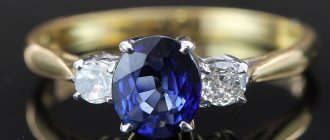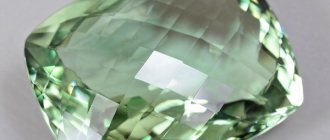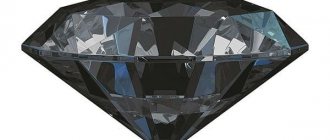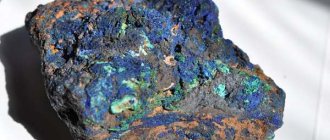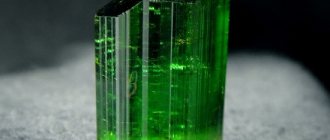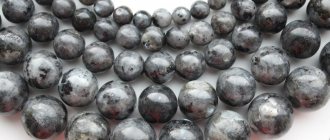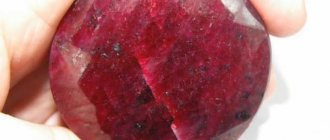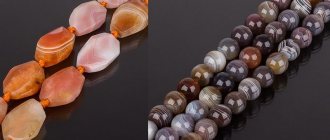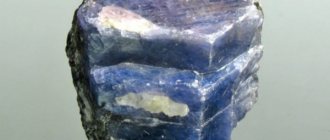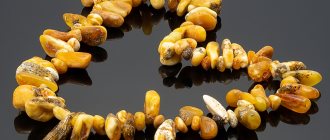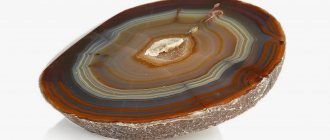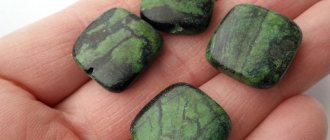Unique colors in jewelry are purple quartz or amethyst. It is difficult to confuse it with other stones; it has characteristics that could make it one of the most valuable stones. But its cost is actually not that great. How much does amethyst cost?
Amethyst is a type of quartz. The name comes from Greek and means “not drunk”, perhaps this is due to the magical abilities of this stone to cleanse the mind, or perhaps with its use in the fight against alcohol addiction.
Natural stone amethyst
Amethyst stone is the first mineral in the world to be processed for use in jewelry. The stone was mentioned in the manuscripts of Ancient Egypt. Later it was widely used by clergy to decorate icons, altars, and church utensils.
Such popularity of the stone has given rise to many legends. The most famous of them explains the origin of the stone and its name. The ancient Greek goddess Amethys fell in love with Dionysus, the god of wine, but she did not share his feelings. Dionysus was so inflamed by the object of his admiration that passion overshadowed his head, and he tried to use force. The goddess was saved from the hands of Dionysus by Artemis, turning her into a luxurious white stone. An annoyed Dionysus poured wine on the stone, which is why it acquired such a rare shade.
Properties of the stone
Like any quartz, amethyst is a hard mineral. On the Mohs scale, its hardness is 7 and its density is 2.6 g/cm3. The density of amethyst exceeds that of steel and glass, which is used to determine its authenticity. Natural amethyst will not be scratched if you run a knife or a piece of glass over it. Amethyst has the shine of glass and reflects beautifully due to the pyramidal shape of its crystal lattice.
The main color of the stone is purple, but it can have different shades: more delicate or rich, violet, lilac, and even slightly purple. The reason for the change in the color of the mineral is the difference in the ratio between the inclusions of manganese and iron ions. Such inclusions enter the crystalline structure of the mineral, thereby violating its ideality. Purple stones are considered the most beautiful, although amethysts can also come in rarer colors, such as deep purple, soft pink or deep red.
Processed amethyst
Amethyst can lose its color when exposed to ultraviolet light, and when heated to high temperatures - up to 250 degrees Celsius; when cooled, the color only partially returns, but ceases to be so rich.
One of the varieties of rare shades is green amethyst. This stone also has another name - prasolite. It is very rare, mined only in Brazil. We value it among jewelers for its wide processing capabilities. Despite the fact that it is quite rare, its price is not that high. Often the stone can have various shades of green and have inclusions, which makes it even more beautiful and unique.
A rarer variety of amethyst is black amethyst. Such amethysts are also found only in one country - Uruguay. They take a long time to form—over millions of years. Unlike green amethyst, this stone is expensive. It is believed to have unique properties and is able to remove stress and radiation.
What do they offer instead of a gem?
Under the guise of a gem in jewelry they offer:
- glass;
- plastic;
- artificial material;
- natural cheap gems.
Artificial material is crystals grown on the basis of quartz. It forms the basis of natural amethyst, so the resulting gems cannot be distinguished by physical and aesthetic characteristics. A counterfeit is considered conditionally.
Artificial amethyst
Similar but cheap fluorite, burnt or painted quartz are sold as a precious lilac gem.
What determines the cost of amethyst?
Several decades ago, purple amethyst was mined only in Russia, so its price reached the cost of natural emerald and ruby. Not so long ago, a deposit rich in such stones was discovered in Brazil, so the pricing policy has changed. And although amethyst has unique qualities, its price does not reach the most expensive stones.
The cost depends on the color of the mineral. More expensive samples have a bright, rich color. Defects in the material also directly affect the value of this gemstone. Materials that come from volcanic rocks are more resistant to fading and discoloration, and therefore are more valuable.
Average prices for amethyst today are as follows:
- 3 carats, size 32x15 mm - 3100-3200 rubles;
- 14 carats, size 19x12 mm - 3500-3700 rubles;
- 51 carats, size 38x33 m - 6300-6500 rubles.
Few large exhibits of amethyst were found; the standard size of the stone rarely exceeds 10 cm. The US national collection contains a stone weighing 1,300 carats. The largest nugget in history was found in northern Finland, weighing 65 kg.
There are several types of stone cutting. The stone has sufficient hardness to be processed and enhance its natural beauty. Faceted stones are found in the shape of triangle, pear, square and heart shapes. The most expensive types have a mixed brilliant or step cut.
Amethyst
My precious stone has turned pale, My beloved dark amethyst. This sign, hidden from many, is understood by those who are pure in heart. The dumb rulers of timid souls, with a satanic daring game, burn bloody rubies to the dream, seduce with sinful beauty! My ruby! My flame is inspired! You are powerful, you are bright and radiant... But I love the precious stone - Pale pure amethyst!
N.A. Teffi
A long time ago, when the gods still roamed the earth, the beautiful nymph Ametis lived in Ancient Greece - the eternally young deity of nature.
And she was so beautiful, so graceful that the frivolous god of fun and winemaking, Dionysus, fell in love with her. However, Ametis rejected his advances - she was happier with a simple young shepherdess. In anger, Dionysus chased the unfortunate woman through the valleys and forests for a long time, wanting to force her to share his feelings, and the nymph called the goddess of the hunt Artemis for help. She turned the girl into a statue of white stone, and Dionysus, having finally caught up with the fugitive, discovered only a dead stone. In desperation, he tried to revive his beloved by dousing her with wine and grape juice - and at that same moment the statue turned from white to a deep purple color, sparkling in the sun with a purple sheen... So, according to the ancient legend, one of the most beautiful stones on earth was born , which, as if in memory of the history of its “birth,” began to protect lovers and protect people from the harmful effects of wine... Amethyst is one of the most delicate stones. It brings peace to our soul, the power of divine love, and guides us to harmony with ourselves and the world around us. It does not make our life easier, but it teaches us to accept it as a gift and find the best in it.
It is possible that amethyst is named so because of its lilac-violet color, reminiscent of highly diluted red wine, from which one can no longer get drunk.
Perhaps that is why amethyst was also considered a symbol of devotion and a talisman that strengthens the will. Otherwise, amethyst was called the “stone of Bacchus.” It is also often called “stone violet”, and in Ancient China it was called “lilac stone nobility”. Since ancient times, not only the Greeks have considered it an amulet against intoxication. In an old Russian medical book it is written: “Whoever owns it can drink as much as he pleases, but will not lose his mind.” A little history
In the 16th century in Russia, its reddish varieties were called “dumplings” or “amephises” and were valued more than rubies, for example, the crown of Irina Godunova was decorated with densely colored amethysts, alternating with large sapphires.
In ancient times, amethyst inserts were given a rounded shape; several centuries ago, emerald (step) cuts began to be used. This gem was also loved in the East, especially in China - here bottles for perfumes and ointments, boxes and figurines were cut out of single pieces of the mineral. But in Tibet, this stone was a magical talisman, an indispensable “participant” in rituals of meditation and contemplation. And the Song of Songs mentions how King Solomon himself gave his beloved Libyan amethysts, “like violets,” as a sign of the strength of his feelings. In India, amethyst was considered one of the most powerful magical stones. An amethyst crystal placed between the eyebrows calms the mind, helping to achieve inner peace. It is believed that amethyst initiates the opening of the “third eye” - that is, it helps to plunge into the subconscious area of omniscience. At this moment, a transition occurs from the material level to the higher forces of the Universe. With its healing purple color, amethyst extinguishes mental pain and anxiety, calms and purifies thoughts, fills the aura with positive energy and good intentions. Indian Ayurveda says that amethyst helps control emotions. In ancient times, wine bowls were decorated with amethysts or a crystal was placed in the bowl. Anyone who drank from it or wore an amethyst in a ring had no fear that the wine would cloud the mind or loosen the tongue. If amethyst were not so common, it would become one of the most expensive gemstones due to its extraordinary purple color, clarity and beautiful crystal shape. This is a purple variety of quartz. In nature, it occurs in the form of oblong prismatic crystals that end in a hexagonal pyramid. Forms intergrowths of crystals - druses. Amethyst crystals in the form of a druse Amethyst brush
The color of amethyst is so individual that even other, more expensive purple and lilac jewelry stones are often compared with it.
In the Middle Ages, amethyst was called the bishop's stone and was worn by wealthy nobles, cardinals and bishops of the Catholic Church. Amethyst is considered the official, canonical stone of the Church. The Pope - after his elevation to the rank, wears the “Fisherman” ring as a sign of the highest ecclesiastical dignity. This is an amethyst ring with a carved image of the Apostle Peter in the form of a fisherman, as a kind of symbol that captures souls. All those ordained bishops by the Pope receive from him rings with amethyst, without engraving, as a symbol of the purity and integrity of the faith. The hero of Anatole France’s novel “The Amethyst Ring” describes this stone as follows: “The bishop wears the ring as a symbol of his spiritual marriage with the church, and therefore the ring should, in a certain sense, express with its appearance the idea of purity and strict life... That is why it is called the bishop’s stone...” According to legend, Saint Valentine wore an amethyst ring with a small Cupid carved on it. Celebrities among the Morozov Gospel
Catholics and Orthodox Christians used amethyst to decorate religious objects.
In medieval church altars, miters, panagias, crosses, a purple amethyst fire burns. The Armory Chamber houses the “Morozov Gospel”, in its massive binding sparkling superbly crafted amethysts. “Morozov Gospel” Amethyst ring of Princess Tarakanova
The legend about the amethyst ring of Princess Tarakanova has been preserved.
This ring was of rare beauty and very old workmanship. It is unknown where she got it from. Contemporaries said that he was her talisman, accompanied her on all her travels around the world, helped her find patrons and change her place of residence in time when she was in danger. According to eyewitnesses, the amethyst ring helped her avoid many traps until she met Count Orlov. Despite her intuition and the warnings of her friends, Princess Tarakanova could not resist the count’s charm, believed his declarations of love and agreed to go with him to Russia. As a pledge of love and fidelity, she gave him her ring. Literally the next day, her imaginary wedding took place with Orlov on a ship, where the priest was portrayed by a sailor in disguise. And a day later she was arrested as an impostor. The unfortunate woman was imprisoned in the Peter and Paul Fortress, where she soon died of tuberculosis. Rumors circulated around St. Petersburg that Orlov also parted with the stone - and after that he started drinking for several months. “Head of Arsinoe”
The famous amethyst product is the so-called “Head of Arsinoe”.
The 2.2cm high miniature was made in Ancient Greece and dates back to the 3rd century BC. In ancient Greek myths, several women named Arsinoe are mentioned. This was the name of the nurse of the god Dionysus, as well as the mother of the legendary physician Asclepius. However, most likely the wife of the ruler of Egypt, Ptolemy II, is depicted here. Brooch with the profile of King George IV
Gem on an amethyst (profile of King George IV)
The most famous, more modern examples of amethyst products include a brooch surrounded by diamonds in the form of a gem with the image of King George IV of Great Britain (1762-1830).
Later, the future King George V received this item as a Christmas gift in 1927 from his mother, who was the sister of the Russian Empress Maria Feodorovna. On the reverse side of the gem there are the letters RB&R - the mark of the firm Rundell, Bridge and Rundell, which supplied jewelry to the royal court. Lioness head
Also well known is the amethyst piece in the Cleveland Museum of Art, which represents the head of a lioness on a stand supported by eight monkeys.
It belongs to the culture of the ancient state of Meroe, located in the 3rd-1st centuries AD. in the territory of modern Sudan. Its ruins are located near Khartoum, the capital of this state. The head of a lioness was found along with other artifacts during excavations of the necropolises of Meroe in the twenties of the last century by the American archaeologist J. Reisner. Marcus Junius Brutus
Amethyst gems began to be carved back in Ancient Greece and Ancient Rome.
One of the oldest antique amethyst gems is kept in the Museum of Fine Arts in Boston. This work dates back to the 2nd century AD. and has a very small size - only 12X15mm. According to one version of experts, it depicts the patrician Marcus Junius Brutus Caepio, one of the most famous traitors in history, the head of the conspiracy against Julius Caesar. It was to him, according to legend, that the dying words of the great dictator of Ancient Rome were addressed, which later became popular - Et tu, Brute? (And you, Brutus?). Bouquet of Maria Theresa
The bouquet of Austrian Maria Theresa, which was made by Michael Grosser in 1760, is considered a world masterpiece.
The bouquet is a gift to Emperor Franz Joseph of Austria from his wife Maria Theresa. The bouquet consists of more than 1,500 amethyst and other stones. Currently, this magical bouquet is kept in the Vienna Historical Museum. Bouquet of Maria Theresa Deposits
Even 250-350 years ago, on the Tersky coast of the Kola Peninsula, on Cape Korabl, the purple gem was mined by the monks of the Solovetsky Monastery, from where it spread to many churches in Russia. Until the 18th century The main supplier of amethyst was the island of Ceylon (Sri Lanka), where it was mined from placers. In the first half of the 18th century. deposits were discovered in Germany, and in 1768 in the Urals. In the middle of the 19th century. Deposits of Brazilian amethysts, sometimes of a very beautiful dark purple color, began to be intensively developed, although the Ural amethysts are traditionally considered the most exquisite. After ten tons of beautiful, densely colored amethyst crystals were brought to Europe from Brazil more than a hundred years ago, the price for it fell tens of times. And before that, rare specimens of dark crimson color in Europe were valued on a par with diamonds. Today in Russia, amethyst is mined in the Urals, on the Kola Peninsula, and in Siberia. Abroad, the most significant deposits are located in Brazil, Uruguay, the USA, Madagascar, Sri Lanka, etc. Some deposits produce amethysts that are unique in quality and color. Often, experts can visually determine the deposit of the proposed stone: by the color of the sample, the shape of the crystals and the nature of the inclusions.
Amethyst Bolivia
Amethyst Nigeria
The bright purple hue of Nigerian amethysts is given by needle-shaped inclusions of hematite. There are excellent examples of amethyst in many museums around the world. A 24 cm long color-changing crystal from Mexico and a 77.9-carat cut stone from Brazil are housed at the Natural History Museum in Los Angeles. Three large, superbly cut amethysts are kept in the British Museum's Mineral Gallery. The weight of one of them (of Brazilian origin) is 343 carats. The other two, 90 and 75 carats, were found in Russia. The largest cut amethyst in the world, originating from Brazil, weighing 1362 carats - 272.4 grams, is kept in the Smithsonian Institution in Washington, where wonderful Russian amethysts are also located. Suffice it to say that according to the price characteristics, which take into account the intensity and attractiveness of the color and the quality of the stone, three types are distinguished - “Siberian”, “Uruguayan” and “Bahia”. The first of them, named after the Ural stones, is naturally the best, and its cut price ranges from 10 to 25 dollars per carat for a weight of 3 carats, the second, for a weight of 3-20 carats - 5-20 dollars per carat, and the third of the same weight, the palest - 1.5-20 dollars per carat. On the domestic market, a cut amethyst weighing 1-2 carats of rich color is valued at $10-12 per carat, and weighing 40 carats or more - $25-28 per carat.
Chevron amethyst
For the shape of their color, zonal amethyst crystals received the name chevron amethyst.
Pendant, amethyst chevron Royal amethysts Amethysts of Catherine the Great
Catherine ordered at least two pairs of girandole earrings for herself.
Both pairs of earrings were originally part of the Diamond Cabinet of the Romanovs. But they ended up in the part that, according to the Bolsheviks, was not of great value and were sold at Christie's auction in London in 1927 to Mr. SJ Phillips. Queen Alexandra's Amethyst Tiara Necklace Queen Alexandra's
Necklace, previously owned by Queen Alexandra née Princess of Denmark, was last sold at Sotheby's in 2007. The piece of jewelry was put up for auction by Mr. Gordon Getty. Previously, Getty lent the tiara necklace to the wife of Hollywood actor Don Johnson, Kelly. The first owner of the tiara necklace was Queen Alexandra, but unfortunately not a single image of Alexandra wearing this jewelry has survived.
Don Jones's wife, known as Queen Alexandra,
Alexandra of Denmark (1844 - 1925) was Princess of Wales (wife of the heir to the throne of Great Britain) from 1863 to 1901.
In 1901, after the death of Queen Victoria, her husband became king as Edward VII, and Alexandra became queen and empress of India. After the death of her husband in 1910, she became Queen Mother as the mother of King George V. The tiara necklace is a garland of leaves that forms five wreaths, the center of which is decorated with amethysts. Five wreaths alternate with four pear-shaped diamond scrolls. The necklace is made of gold and silver. More than 13 diamonds weigh 8.5 carats, the remaining 69 smaller diamonds weigh 10 carats, and the very small ones weigh 5 carats. Photo of an amethyst necklace from a 1958 auction catalogue.
The necklace can be worn as a tiara if placed on a base.
Amethyst Parure of Queen Mary Diamond Necklace with Amethysts Amethyst Parure of Norway
Belongs to Queen Sonja, but is now often worn on special occasions by Crown Princess Mette-Marit.
Crown Princess Mette-Marit Queen Sonja Amethyst Parure of Sweden
On a funny note...
The bathtub is made of real amethyst, and it costs quite a bit - $120,000.
As far as we know, only 3 women in the world own (and use) such a masterpiece. Jewelry house Hemmerle Obtaining other quartz from amethyst
Amethysts are often refined - they improve and change the color of the stone by heating. Using different temperatures, amethyst is transformed into ametrine, citrine, praseolite or moonstone. When slowly heated to 350-400 C, a two-color amethyst-citrine, also called ametrine, is obtained.
Ametrine - zonal amethyst
Ametrine is valued more than amethyst and citrine.
Citrine
When heated to 400-450 C, all amethyst turns into citrine.
The green color is obtained when heated to 450-500 C. This stone is called praseolite - green amethyst. In nature, perfectly transparent green quartz does not occur (occasionally you can find opaque crystals - or prasemes, but they are rarely used in jewelry). Praseolite
When heated to 550 C, a milky component appears; such amethyst is used to imitate moonstone.
Some amethysts fade in the light, which must be taken into account when storing stones, including in products. With radioactive irradiation, the original color is restored. This is explained by the fact that the color of amethyst is of a radiation nature and is associated with an admixture of iron. The most intense color is usually concentrated at the very tip of the head, so when processing the stone the heads are chipped off. Imitations
It should be noted that there are a large number of good synthetic amethysts on the market, which are quite difficult to distinguish from natural ones by most gemological methods.
This is one of the factors that determines the rather low prices for natural amethyst, approximately equal to the prices for synthetic amethyst. Identification is carried out by physical properties, the presence of liquid and gas-liquid inclusions that form “moiré (tiger) patterns”, doubles, uneven color, as well as lower thermal conductivity. Simple ways to identify natural amethyst without special equipment and deep gemological knowledge
1. Color If even slight unevenness in color is invisible to the naked eye, the stone is more likely synthetic than natural.
If a stone has a clear “Alexandrite” effect of changing color under different lighting conditions, the stone is more likely to be synthetic than natural. Natural amethyst is never without inclusions. 2.To the touch. Amethyst, like any natural quartz, is always cold to the touch. Natural stone has lower thermal conductivity. If you have a guaranteed natural or guaranteed synthetic stone on hand, as a standard for comparison, you can compare the heating time of the stones in your hands or “on your cheek”. Synthetic stone will heat up faster, even if it is in the product. 3.Water test. Natural stone discolors around the edges when placed in water, synthetic stone does not. 4. Cleanliness by eye. When comparing two stones (natural and synthetic), the synthetic one will look more transparent. The natural one is a little “cloudy”. 5. In ultraviolet light (if possible) Under a source of UV radiation, natural stone discolors evenly, while synthetic stone discolors in patches. And a little more...) A very bright and saturated color should lead to suspicion that the amethyst is artificial. If possible, look carefully at the girdle (the narrow belt that determines the shape of the stone); in natural amethyst it is not polished. In synthetic amethysts it is always polished. More detailed checks only from a good gemologist). Magical Properties
One of the amazing properties of amethyst is its ability to purify and enhance the energy of objects placed above and around its crystal.
Amethyst druses are good to place in rooms where communication between people takes place, be it an office or a home environment - they perfectly harmonize the space. Beads and necklaces can be hung in the bedroom at the head of the head - you will forget about insomnia. Like some other quartz, amethyst does not like bright sunlight. To protect jewelry or crystals from fading, it is better to store them away from direct sunlight. With relatively low heat, the color can be restored. Amethyst can be used as a talisman not only by wearing it on the body, but also by installing a product or druse made of purple stone in the house. It perfectly cleanses and harmonizes the atmosphere, expels any negativity. It is recommended to place jewelry on an amethyst brush at night to remove the negativity that has accumulated during the day and restore their energy. And simply jewelry with amethysts should not be hidden in a box - they also cleanse the space of foreign influences. It is believed that this stone is an excellent remedy for wrinkles and freckles, warts and moles - they should be smoothed out more often with an amethyst cabochon. In ancient times, they were convinced that with the help of amethyst, tongue-tiedness and other speech defects (stuttering, etc.) could be corrected if worn on the third, seventh and eleventh days of the Moon. It is also called the soldier's stone, as it protects against battle wounds; often - widows, but not because it turns women into widows, but because the wife, having lost her beloved husband and not wanting to think about a new marriage, wears amethyst as a symbol of fidelity. In the 19th century, it was often called “the stone of old bachelors.” However, in Ancient Mesopotamia it was believed that amethyst expels old love from a woman’s heart in order to open it to new heartfelt affections. The Sumerians attributed to it the ability to induce love for the giver of the gem, even if the recipient of the gift is in love with another. On one of the Sumerian clay tablets there was carved on this occasion: “Beware of him, women, betrothed or married.” An ancient manuscript dating back to the 12th century says that those who wear it do not suffer from leprosy, scabies and similar diseases. His property and goodness do not become scarce, he himself and his words are pleasant to people. Wearing this stone is beneficial for the growth of prudence. When choosing an amethyst as a talisman, you need to know that the current low prices for amethysts are due to the presence on the market of a large number of beautiful synthetic amethysts, which are practically indistinguishable from natural ones by most gemological methods. Synthetic amethyst is usually very transparent, clean, bright, without internal defects and inhomogeneities, which should be alarming, because stones of natural origin are almost always less perfect. Amethyst crystals are grown artificially in Russia. But synthetic amethyst can only serve as jewelry. It is best to set an amethyst in silver, but if other stones are used in the decoration, then gold is also acceptable. Astrologically, it is most suitable for Aries, Sagittarius, Capricorn, Aquarius and Pisces, although in general wearing it from time to time is not contraindicated for anyone. Author Guzel Bakeeva
And amethyst is also distinguished by its amazing integrity. Sapphires are not only blue, diamonds are not only colorless, topazes, opals and tourmalines are amazing in a huge number of colors... and that is why it is easy to confuse them, as often happened in ancient times, when there were no accurate ways to determine the structure of the stone. But the amethyst passed through time unchanged - its violet shine is immediately recognized and loved in advance.
Antique ring with an amethyst
“Real” jewelry
Ring with an amethyst cabochon, RUR 6,250.
Updated 11/01/13 12:45
: I published a post with a careless click... Oh well... a little more)
The Duchess of Windsor's necklace was made by Cartier craftsmen to a special order of her husband in 1947 in Paris. Nowadays, most jewelry brands are happy to use amethysts in their collections. Dior ring from the Diorette collection; Lydia Corteille ring. Lydia Corteille bracelet, De Grisogono ring. Stephen Webster ring; Dior Coffret de Victoire ring. Amethysts are equally beautiful both faceted and in cabochon form (smooth as sea pebbles). De Grisogono necklace. Bulgari constantly pampers customers with gems, both in luxurious sets and in more casual jewelry. Bulgari earrings and bracelet.
Updated 11/01/13 13:00
: made from real jewelry
Earrings with amethysts in white gold, about 12 thousand rubles.
Updated 11/01/13 13:03
: Cocktail ring, $185
Updated 11/01/13 13:15
: Bracelet from India, about 5 thousand rubles. Bookmark with amethyst, 3000 rub.
Pendant with amethyst, about 9 thousand rubles.
Updated 11/01/13 13:21
: Gold pendant with amethyst, about 9 thousand rubles.
Updated 11/01/13 13:33
: Emerald - the absolute of happiness Aquamarine - a symbol of fidelity Tourmaline - a stone of joy, love and victory Alexandrite - a stone of sadness Opal - a rainbow in the hands
Magic properties
The stone is used to relieve stress, improve the functioning of the central nervous system and thyroid gland. It has a positive effect on the right hemisphere of the brain, on the pituitary gland. Regulates blood circulation and helps cope with mental disorders.
Helps increase intelligence. It is believed that it prevents the development of defects and normalizes speech, eliminating its defects. It is used as an antidote for poisoning, in the treatment of skin diseases, headaches and insomnia. By drinking water infused with this precious stone, many try to get rid of the harmful habit of alcohol abuse.
Amethyst reduces anxiety and pain, helps control and softens evil thoughts. Helps to establish peace and complete relaxation during meditation. Makes a person more peaceful and increases the depth of understanding.
Amethyst is used to win competitions, and this stone under the pillow helps to have good dreams. As a talisman, it promotes the growth of prudence, increases vigilance, and helps establish contact with superiors.
Amethyst is most suitable for Pisces and Gemini. Emphasizes all the best qualities of Aquarius, and makes Aries more peaceful.
How to wear amethyst jewelry correctly:
- silver enhances the magical properties of the stone;
- gold does not harmonize well with amethyst, it suppresses all its abilities and positive properties, the effect is neutralized in combination with other stones, for example, cubic zirconia;
- jewelry is not intended for daily wear, as it has the ability to accumulate negative energy;
- You shouldn’t wear them with clothes made of bright colors either;
- Men are not recommended to wear rings with this stone on the ring finger of their right hand, and women - on their left.
This stone has aggregates called drusen. Drusen are tightly pressed, fused with edges or base, diamond-shaped crystals on a substrate. This decor item is very popular; it carries the positive energy of the stone. The owners keep them in a visible place so that they clear the room of negativity.
Amethyst Jewelry
They can be used to protect against computer radiation by placing amethyst druses in front of the monitor. A conglomerate of this material can also be used to remove energy from other stones and metals. Having such decorations in the room helps to get rid of negative energy in the house in just one night.
Who is suitable according to their zodiac sign?
The stone is best suited for Aries and Aquarius. For the former, he will become a pleasant protector from unnecessary contacts, and for the latter, he will help self-realization and achieve success.
- The stone will help Pisces meet their soul mate and improve relationships with household members.
- For Cancers, amethyst will bring creative success.
- If Libra wears a ring with this stone, they will be able to strengthen their character.
- For Sagittarius, the mineral will bring good luck and financial success.
- It will help Virgos find strength in difficult times.
- Scorpios with this stone will experience success in any endeavor.
It is better for Leos and Taurus to avoid buying amethyst
Rules of care
The stone has some features, they are dictated by its nature, because amethyst is quartz and the same is characteristic of it. Rules for caring for products containing this stone:
- During storage, avoid exposure to sunlight.
- High temperatures can change the color of quartz.
- Tarnished stone should be washed with a solution of soap and water and wiped with a cloth. You can take it to a jewelry workshop for cleaning.
- It is better to avoid contact of the mineral with household chemicals, alkalis and acids.
How to distinguish from a fake?
Although amethyst is not expensive, fakes made from it can be found even in well-known jewelry chains. Instead, they most often sell: plastic, glass, and other cheaper minerals. There are a number of parameters by which amethyst can be identified by eye.
- Color. The shades of the natural mineral are slightly muted. The color is not even, you may see bubbles or small cracks inside the stone. A fake will have a perfectly smooth surface and color.
- Warm the stone in your hands. The fake will quickly heat up, while the natural stone will remain cold for a long time.
- Dip the stone into the water. Amethyst has one peculiarity: when it gets into water, its edges begin to turn pale. Even artificially grown minerals cannot fake this effect.
- Try scratching the glass. Natural stone is strong enough and can easily do this, unlike plastic or glass.
Start of activity (date): 04/17/2020 08:31:00
Cost and features of amethyst mining
Amethyst raw materials for cutting
Amethyst is especially popular as a jewelry stone in Russia. From the jewelry industry, the supply of amethyst jewelry is constant, the assortment is very diverse: earrings with amethyst, pendants and pendants, rings and bracelets, women's watches.
Gem prices vary widely:
- small cut inserts per carat of average quality cost 0.88...5 US dollars;
- small carat stones of the highest quality - 5...15 US dollars;
- faceted inserts of larger sizes (average quality) - 5...10 US dollars.
Two faceted ametrines
The raw materials for jewelry processing are zonal amethyst crystals. In natural deposits, yellow zones are most often found, and such gems receive the trade name “ametrine” .
Cut ametrines sell for US$5-8 per carat.
For paired jewelry inserts, the same zonal color distribution is important
In addition to zonal deposits, amethyst is found in round rock formations - geodes. The volume of geodes can be very different: from a centimeter to a meter. The smallest geodes, less than a centimeter in diameter, are called tonsils.
The structure of the amethyst geode is unique:
Amethyst Geode, Brazil
- the outer layer is a thin, but sufficiently strong silica crust. Sometimes there are gaps in it, but the rounded shape of the cavity is maintained;
- the internal cavity of the geode is usually covered with a layer of small pointed crystals, the growth and formation of clear edges of which are not interfered with;
- sometimes, due to the tightness in geodes of small volume, crystallized minerals grow together to form druses; in some cases, a solid crystal monolith is formed in the geode;
- Inside, in addition to amethyst, other quartz crystals may be found: for example, chrysoprase, rock crystal, white or rose quartz. Agate or chalcedony nodules are also found.
A variety of quartz crystals with a rare emerald hue is rarely found. Green amethyst is mined exclusively from Brazilian deposits.
